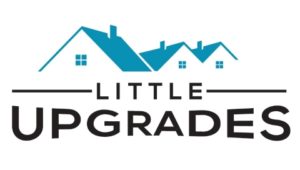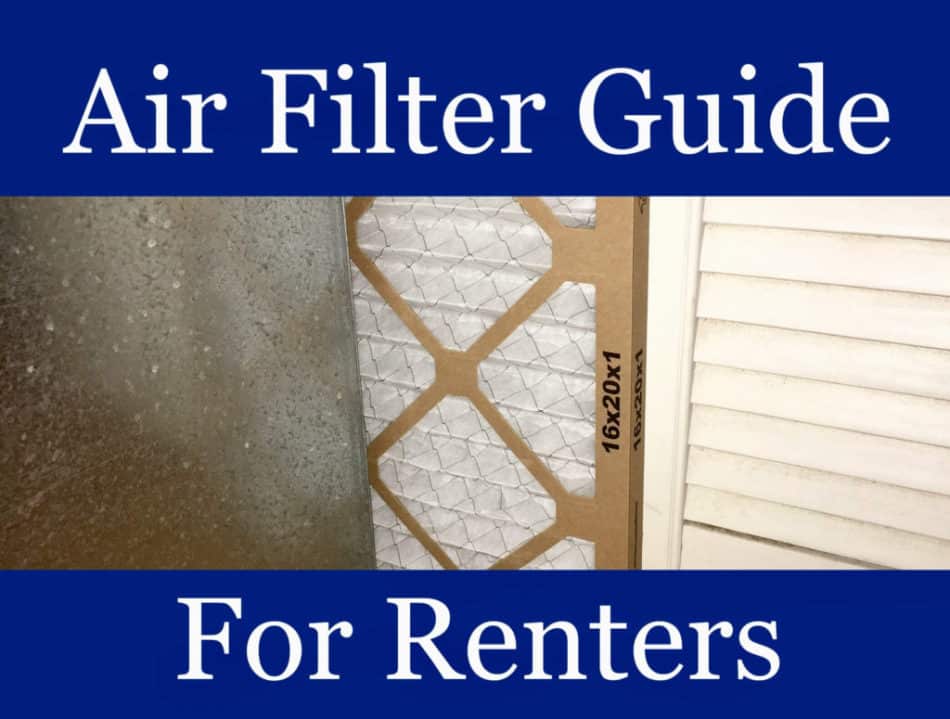
Air filters (e.g. HVAC filters or furnace filters) are one of the most common points of confusion for renters. When you rent a home, the maintenance responsibilities are divided between the landlord and the renter, which can make it tough to know exactly which tasks you need to do yourself.
I’ve rented 5 different apartments over the past 5 years, and in this guide, I’ve compiled everything that I’ve learned about air filters to hopefully save you some time and stress.
Let’s start with the first question most people ask: are landlords responsible for air filters?
Renters are usually expected to replace air filters themselves. This includes the purchase of the filters, although many landlords will provide a couple of extra filters as a courtesy. There are some variations, however, and you should check your lease agreement for specific expectations.
That’ll give you a good start, but there are several more things you’ll want to know. First of all, I’ll give you an example (from a real lease) for how to find your specific air filter expectations. Plus, we’ll cover how often to replace filters and how to do it yourself. Let’s get to it!
Table of Contents
Are Landlords Responsible for Air Filters?
If you have access to the HVAC system in your rental home, then you are usually going to be responsible for replacing the air filters.
With that said, your rental agreement should provide the final word on who is responsible for air filters. And, in some cases, landlords will prefer to do it themselves to avoid potential damage to the HVAC equipment.
To give you an idea of what this will look like in writing, here is an excerpt from a real lease, which clearly states that the tenant is responsible for filters:
Tenant(s) are solely responsible for replacing furnace filters at Tenant’s expense on a monthly basis. Any damage caused by failure to replace filters regularly will be Tenant’s responsibility.
But, with everything there are exceptions, I have a friend who’s air filter gets changed by the property manager.
How to Search Your Lease
I found the above statement in the lease quickly, and you can probably use the same approach to search your lease for filter replacement information. Here’s what I did:
- I opened the lease on my computer (I have a digital version)
- I used the CTRL(Command for Mac users) + F keyboard shortcut to open a search bar on the PDF
- I typed the word “filter” in the search box
By following these 3 steps, I learned that there were only two appearances of the word “filter” in the lease. Both of them were contained in the above clause which was listed in a section titled “Addendum to Apartment Lease”.
If your lease was written thoroughly, then it will should also mention how often the air filter should be replaced.
Searching your lease is also a great way to learn what other things are the landlord’s responsibility, the tenant’s responsibility, or shared responsibility.
Let’s talk more about frequency next.
How Often Do I Need to Replace My Air Filter?
Air filters typically need to be replaced every 1-3 months. The exact frequency can vary based on several factors, such as the HVAC system in your home, the type of filters used, the requirements in your lease, or particularly dusty conditions.
If your lease has a statement about replacing air filters, then it will probably mention how often the air filters should be replaced. If it does, then it’s probably best to follow these instructions from your lease.
For example, let’s refer back to the lease agreement I mentioned above, and this time I’ll highlight the portion that refers to replacement frequency:
Tenant(s) are solely responsible for replacing furnace filters at Tenant’s expense on a monthly basis. Any damage caused by failure to replace filters regularly will be Tenant’s responsibility.
So, there you have it. According to the instructions from this lease, the renter/tenant is supposed to replace the filters monthly.
If your rental contract doesn’t mention how often filters should be replaced, then you could ask your landlord directly. How often to replace filters may also depend on the specific HVAC system and HVAC filters being used.
For example, the filters we’re using in our rental unit, say on the packaging that they’re good for 90 days. Some landlords (who are particularly organized) will also send reminders to their tenants when filters should be replaced. But, they’re not required to, so you shouldn’t expect that.
How to Replace an Air Filter
Now that you have an idea about the responsibility and frequency of replacing air filters, let’s walk through the steps of actually replacing apartment air filters!
3.1 Locate the Air Filter
The first thing you need to do is to find the air filter(s) in your home. Where exactly your filters will be, can depend on the type of furnace or HVAC unit you have and the design of your home.
For a Furnace
In my current home, we have an air filter in our furnace (see below):
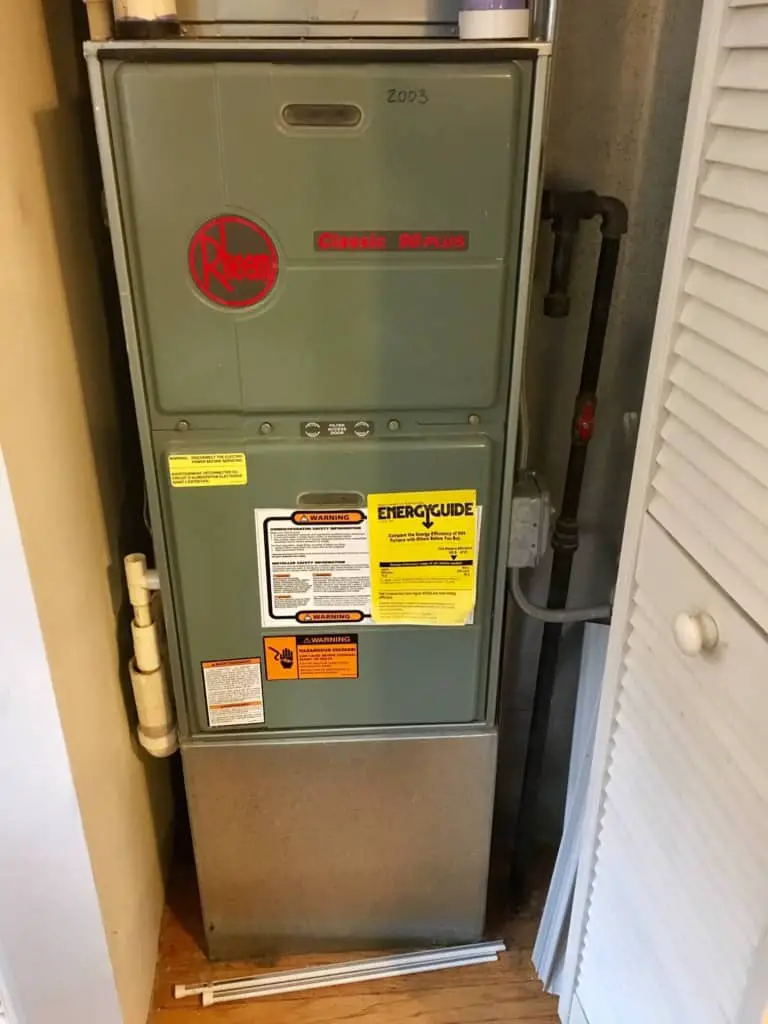
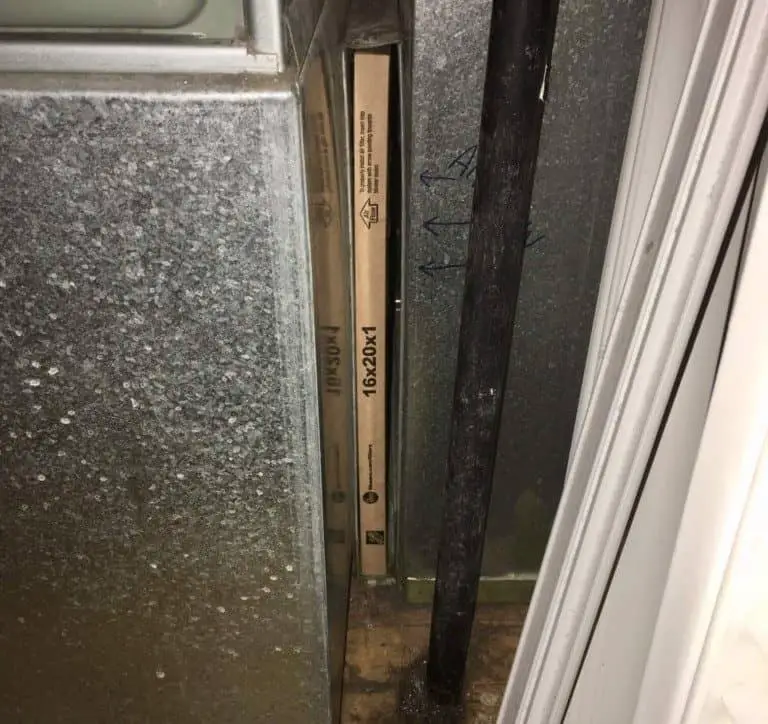
For a Wall Vent
There is also an additional air filter, located in a separate wall vent (see below):
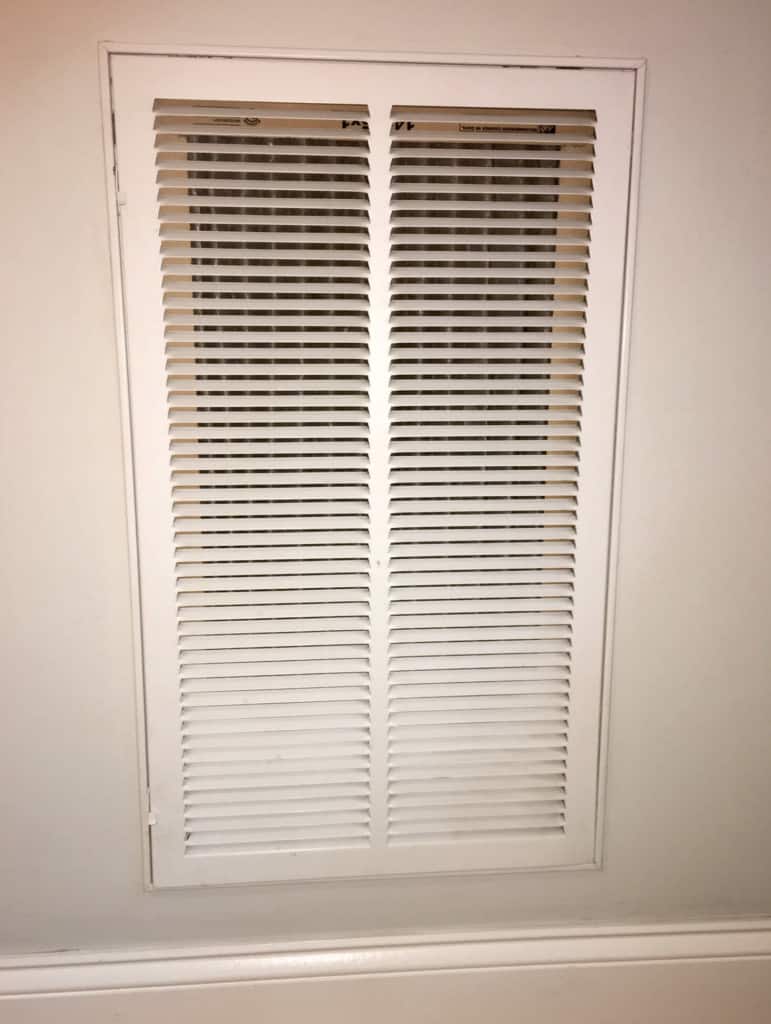
These two locations are fairly common examples of where you’ll find your air filters. So, if I was starting my search for air filters, I would check the furnace first (which is usually in a closet or basement). Then I would check wall vents that look like the image above.
3.2 Determine the Filter Size
Once you find the location of your filters, they usually say right on the side, the dimensions of the furnace air filter. You’ll need to find these dimensions, and check all the filters in your home (if there’s more than one) to see if they’re different sizes.
For my home, the filter size is 16x20x1 for the furnace and 14x25x1 for the wall vent. Here’s an example for where to look for the numbers:
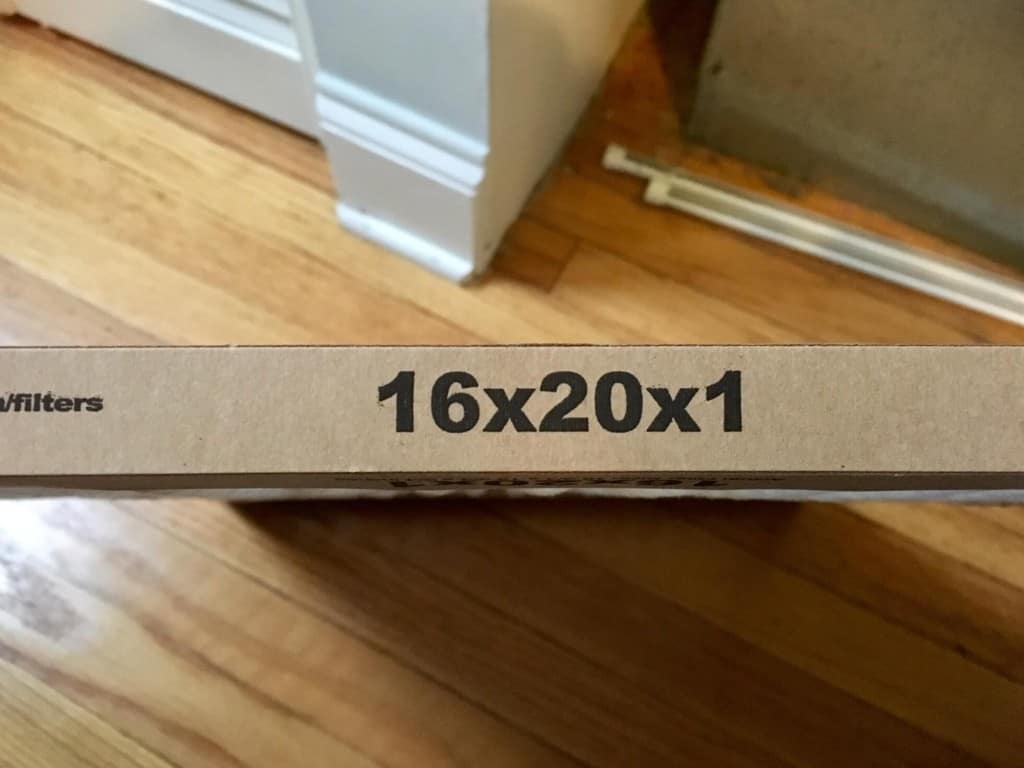
Once you know the size of the filters, you need to get new filters of the same size.
3.3 Get New Filters
If you’re lucky, your landlord may have left you a of couple extra air filters that you can use for replacement. However, this is not always the case, and even if they did leave you extras, you will usually need to get more before your lease is over.
So, how do you get new filters? It’s actually super easy. You can have quality air filters delivered straight to you, like these 3M brand air filters on Amazon (BTW: if you need to buy some, please use this link to Amazon, because we get a small commission from Amazon purchases at no extra cost to you).
Or, if ordering online is not your thing, you can pick-up some air filters at pretty much any local home improvement store (e.g. Home Depot, Lowes, etc.).
3.4 Remove the Old Filter
Once you have some new filters ready, it’s time to take out the old ones (don’t remove the old ones before you have new ones ready).
For a Furnace
To remove a filter from a furnace (like the one we have), go to the filter slot and simply pull the filter out.
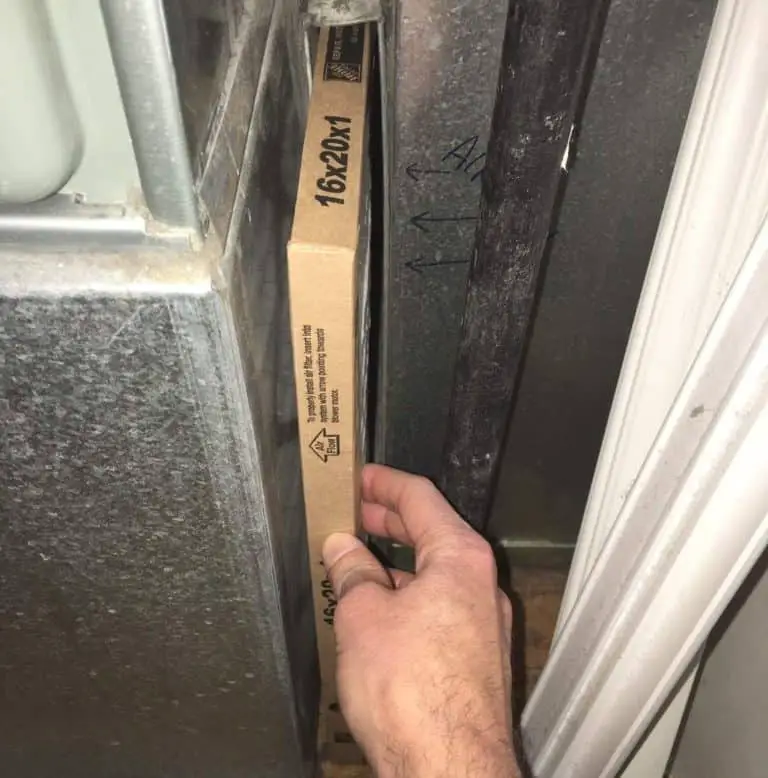
For our filter, the slot is open. For other air filters, it might be in a similar location but have a cover over the slot. So check for that!
For a Wall Vent
If you’re removing the air filter from a wall vent, then you’ll need to release the latches:
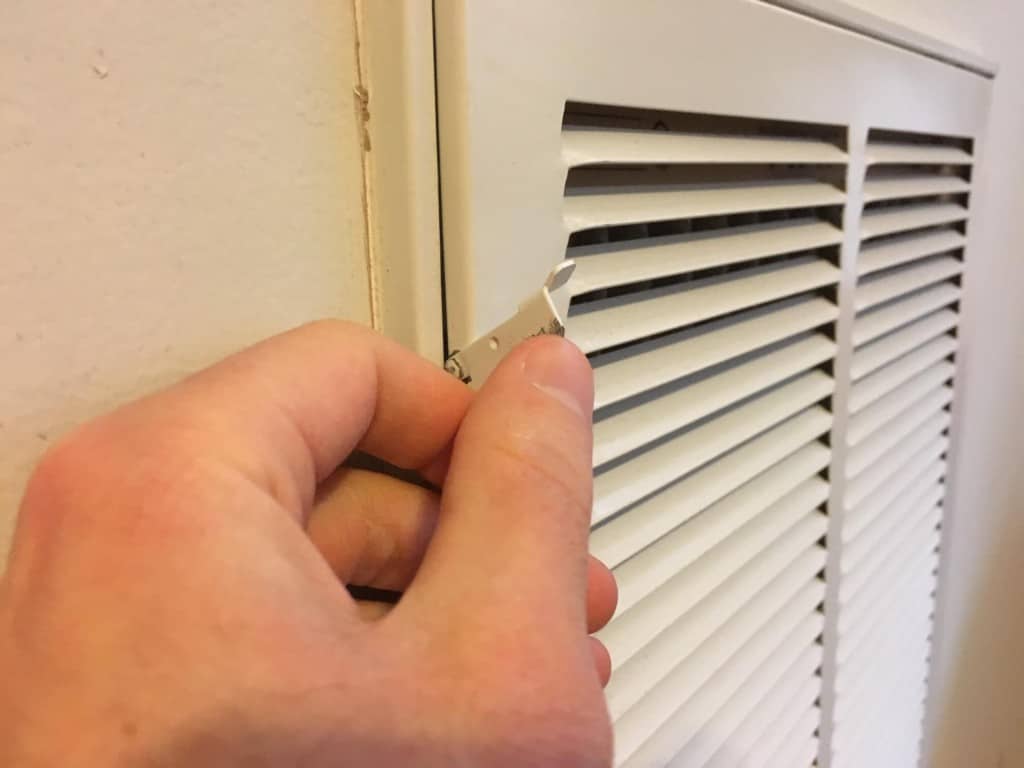
Once you’ve opened the latches, you can open the vent cover:
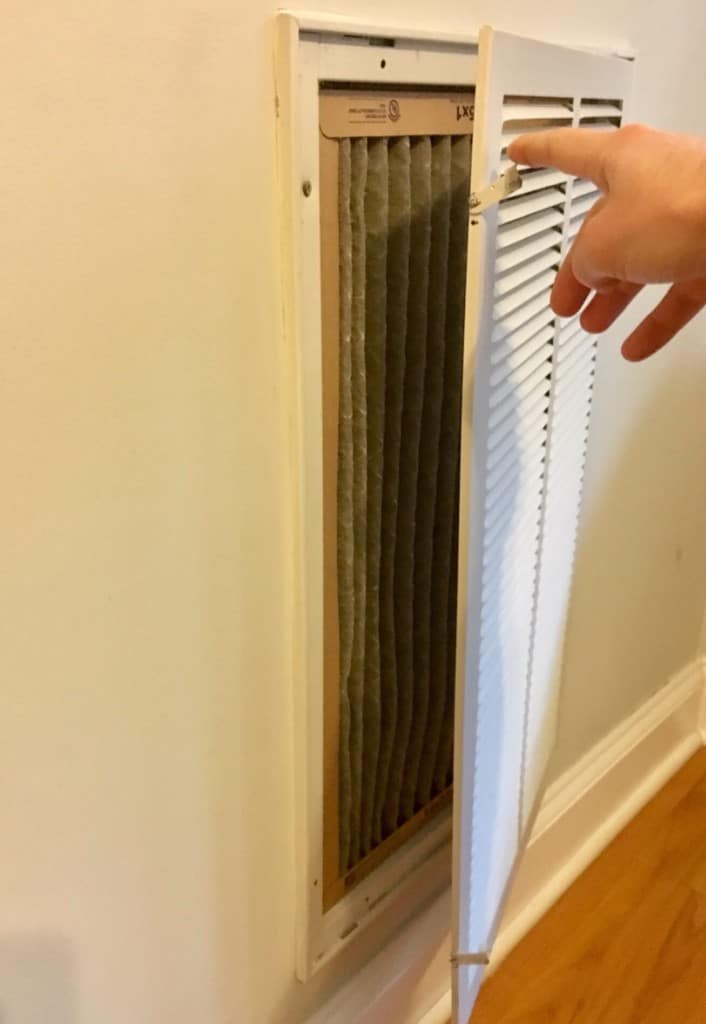
Next, you should be able to lift the filter straight out.
3.5 Insert the New Filter
After removing the filter, you should immediately put in your new filter.
For a Furnace
To do that for a furnace, you can just slide the new filter straight in. One thing you’ll need to check though, is to make sure the filter is facing the correct direction.
The new air filter should have an arrow on the side, indicating the direction of airflow. For our furnace, the airflow goes towards the furnace unit, and so we need the arrow pointing towards the furnace unit. See photo below:
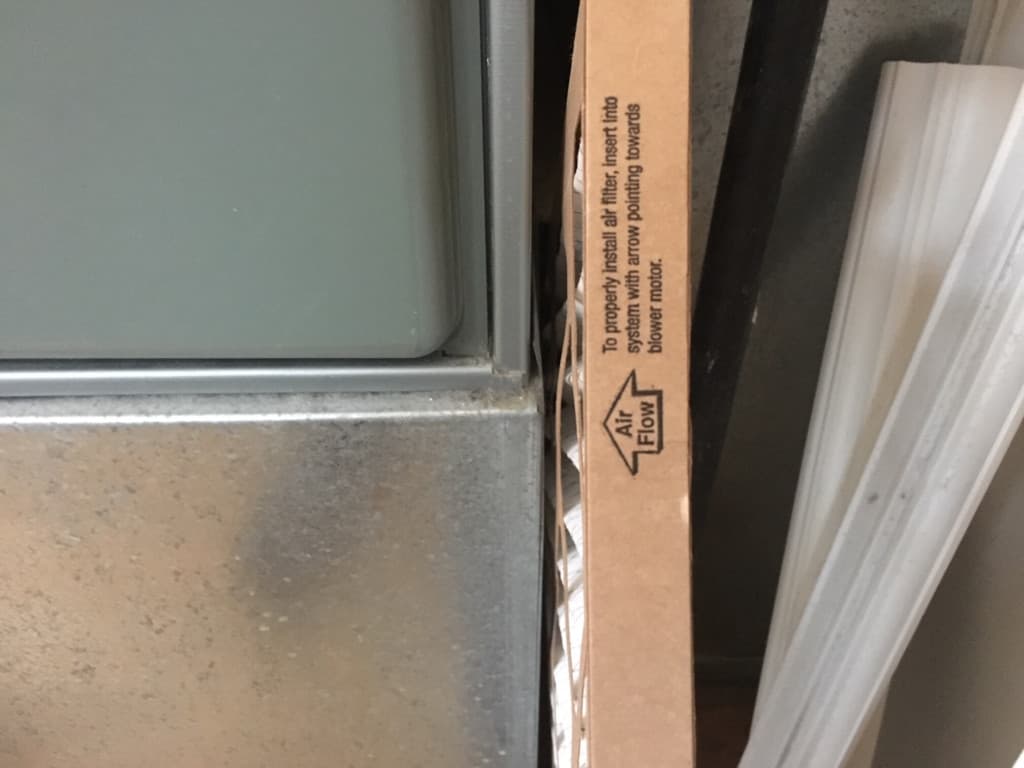
After putting the new filter in, you should close the cover (if there is one).
For a Wall Vent
The wall vents that typically contain air filters, are “return air” vents. Which means that air is flowing from your home back into the vents.
As a result, when you go to put a new filter into a “return air” vent, the airflow arrow should be pointing towards the duct (e.g. away from you). See photo below:
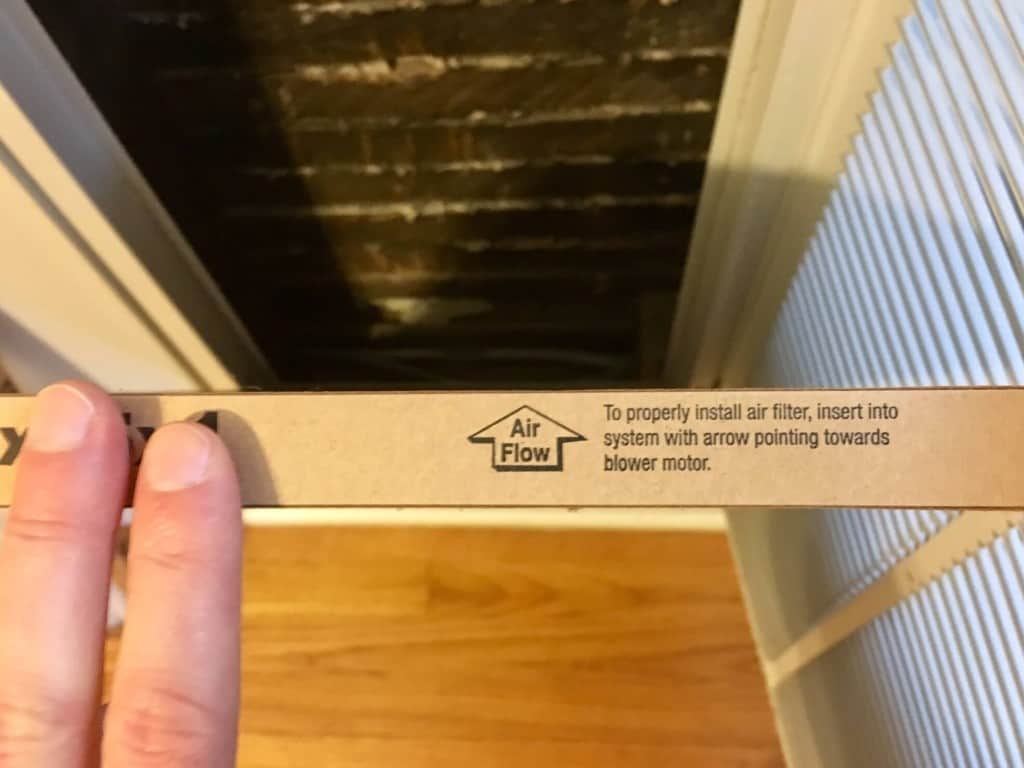
After putting the new filter in, you should close and refasten the vent.
3.6 Write Down the Next Replacement Date
After you’ve installed your new air filters, you should take one more step, to make sure you don’t forget when your next replacement should come.
There are a few different ways you could do this, and the approach that you take mostly depends on you. For example, you could set a calendar reminder for 1-3 months in the future, so that you know when to do your next replacement.
However you like to remind yourself to do things in the future, should also work for replacing your air filters.
Why Do I Need to Replace My Air Filter?
We’ve talked about who should replace the air filter, how often you should replace it and how to replace your air filter. So, now let’s talk about why you need to replave your air filter regularly.
An HVAC filter does two main jobs:
- Improves indoor air quality
- Prevents dust and debris from getting in your hvac system
Having poor air quality can cause health issues, but, if the improved air quality doesn’t give you enough reason to replace your furnace filter, having a dirty filter can cause issues with your hvac system.
Dirty air filters can increase the amount of time it takes for your heater and air conditioner to heat or cool your home.
And, once the filter gets clogged with dust, it will no longer be able to filter that dust which means all that dust will circulate right back into your house or apartment.
This can cause poor air quality and dust will get on the surfaces of your house much quicker.
Last but not least, changing your furnace filter regularly will increase the longevity of your furnace system. Replacing an entire furnace system is extremely pricey!
If you keep up with the necessary repairs and regular maintenance tasks, you can avoid having to completley revamp your heating system.
With all those reasons, it’s a good idea to regularly replace your air filter.
Related Questions
Are Landlords Responsible for Replacing Light Bulbs?
Renters are usually responsible for replacing lightbulbs within their rental homes. This includes the purchase of new bulbs. There are some variations, however, and you should check your lease for specific expectations. For example, some landlords prefer specific types of bulbs and do the replacement themselves.
Can I Replace the Shower Head in My Apartment?
You can generally change the shower head in an apartment, but you should be sure to keep the original shower head and reinstall it before moving out. Before changing the shower head, you should also check your lease to make sure there are not any clauses that prohibit this type of change.
Are Landlords Responsible for Pest Control?
Landlords are typically responsible for providing a rental home in pest-free condition. Landlords are also usually responsible for pests arising from issues with the building. However, renters are usually responsible for any pests they cause (e.g. ants from poor garbage handling). Check your lease for expectations.
